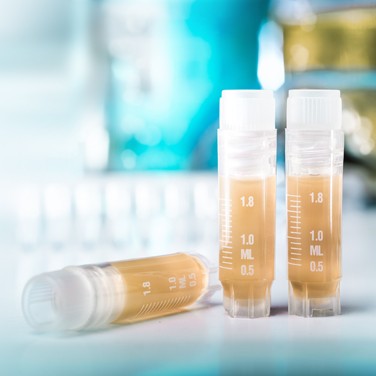Selecting Cryogenic Storage Tubes
Although it may seem like a minor decision, tube and vial quality, material, and ease of handling can all have a significant impact on your precious samples.
When selecting a storage tube, consider the following criteria, depending on sample value, process compatibility, and specific storage needs:
- Tube construction and cryotolerance
- Ease of handling during stocking, retrieval, freezing and thawing
- Vial sterility
- Sample-resin compatibility
- Identification and traceability
Construction and Cryotolerance
Tube shape will affect storage and handling and must also be compatible with the cryogenic workstations, racks and trays that are being used.
When storing material in liquid nitrogen (LN2), use tubes designed specifically for cryogenic conditions. Many tubes are appropriate for use in temperatures above -100°C, and tubes with gaskets will help to prevent evaporation.
Cryogenic tubes are usually made of polypropylene and come in many shapes and sizes, including the Thermo Scientific™ Nalgene™, Thermo Scientific™ Nunc™ and Thermo Scientific™ Matrix™ lines of tubes and caps.
Handling Ease
Standardized and aseptic handling protocols are vital to a well-managed cryogenic sample storage program. Variations in processing and storage can affect the quality of biological samples.
Tube failure can result from overfilling or sample overflow onto the tube threads. Regardless of the tube size, do not fill the tube beyond approximately 85 percent of its nominal capacity — this allows room for aqueous components to expand as they freeze and helps to maintain seal integrity.
Sterility
Look for tubes that have undergone gamma radiation or other guaranteed sterilization during manufacturing to avoid sample contamination. A Sterility Assurance Level (SAL) of 10-3 is a typical standard. For highly valuable samples, use products with SAL of 10-6.
Thermo Scientific™ tubes are also available with pyrogen-free, nuclease-free and endotoxin-free certifications.
Compatibility
Thermo Scientific tubes are made with virgin-grade polypropylene resins, which are resistant to many chemical solvents, bases and acids and have fewer extractables and leachables.
Identification and Tracking
Use sample tracking to monitor samples during storage and to correctly identify them during retrieval.
Most tubes have white marking areas and/or color-coded caps and cap inserts to aid visual identification and reduce the risk of sample misidentification within the cryobox.
Laser-etched, two-dimensional barcoding provides highly reliable identification, while human-readable, one-dimensional barcodes remove the risk of errors during rapid manual identification. Barcodes can be customized to include varying amounts of data for more sophisticated sample tracking.
Options and Choices
Nunc, Nalgene and Matrix tubes and accessories offer storage solutions from basic repositories to fully automated biobanking environments.
Thermo Scientific tubes, plates and equipment are engineered and tested to work together to support sample traceability, sample security and optimal sample recovery. Made with high-purity resins, they conform to strict quality control standards.
Barcoded readers, cappers and decappers, and plate sealers provide greater efficiencies for busy biobanking operations.




